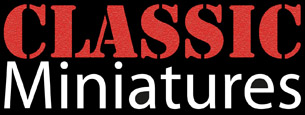
Sparta was a warrior society in ancient Greece that reached the height of its power after defeating rival city-state Athens in the Peloponnesian War (431-404 B.C.). Spartan culture was centered on loyalty to the state and military service.
The Spartan people (Lacedaemonians) were divided into three classes: Full citizens, known as the Spartiates proper, or Hómoioi (“equals” or peers), who received a grant of land (kláros or klēros, “lot”) for their military service. Perioeci (the “dwellers nearby”), free non-citizens, generally merchants, craftsmen and sailors, who were used as light infantry and as auxiliary roles on campaign. The third and most numerous class were the Helots, state-owned serfs used to farm the Spartiate klēros. By the 5th century BC, the helots, too, were used as light troops in skirmishes.
At age 7, Spartan boys (from the Hómoioi class) entered a rigorous state-sponsored education, military training and socialization program. Known as the Agoge, the system emphasized duty, discipline and endurance. Although Spartan women were not active in the military, they were educated and enjoyed more status and freedom than other Greek women.
Because Spartan men were professional soldiers, all manual labour was done by the slave class, the Helots. Despite their military prowess, the Spartans’ dominance was short-lived: In 371 B.C., they were defeated by Thebes at the Battle of Leuctra, and their empire went into a long period of decline.
According to Xenophon, the basic Spartan military unit was the ‘enōmotia’, with 36 men in three files of twelve under an ‘enōmotarches’. Two ‘enōmotiai’ formed a ‘pentēkostys’ of 72 men under a ‘pentēkontēr’, and two ‘pentēkostyai’ were grouped into a ‘lochos’ of 144 men under a ‘lochagos’. Four ‘lochoi’ formed a ‘mora’ of 576 men under a ‘polemarchos’, the largest single tactical unit of the Spartan army.
Spartan hoplites were often depicted bearing a transverse horsehair crest on their helmet, which was possibly used to identify officers. The emblem on their shields was usually a red letter “L” (lambda), denoting Lacedaemon and is an emblem of Sparta.
Warlords/officers had a wooden staff – ‘bakterion’. This wooden stick was not a weapon and was used by noble Spartans as a symbol of the power of Sparta.
The Spartans used the same typical hoplite equipment as the other Greek city states, the only distinctive Spartan features were the crimson tunic (chitōn) and cloak (himation), and long hair, which the Spartans retained to a far later date than most Greeks. To the Spartans, long hair was the symbol of a free man, to the other Greeks, by the 5th century, its peculiar association with the Spartans had come to signify pro-Spartan sympathies.
During a battle, all the commanders took place on the right flank of their unit, and the king was on the extreme right flank of the complete army.
